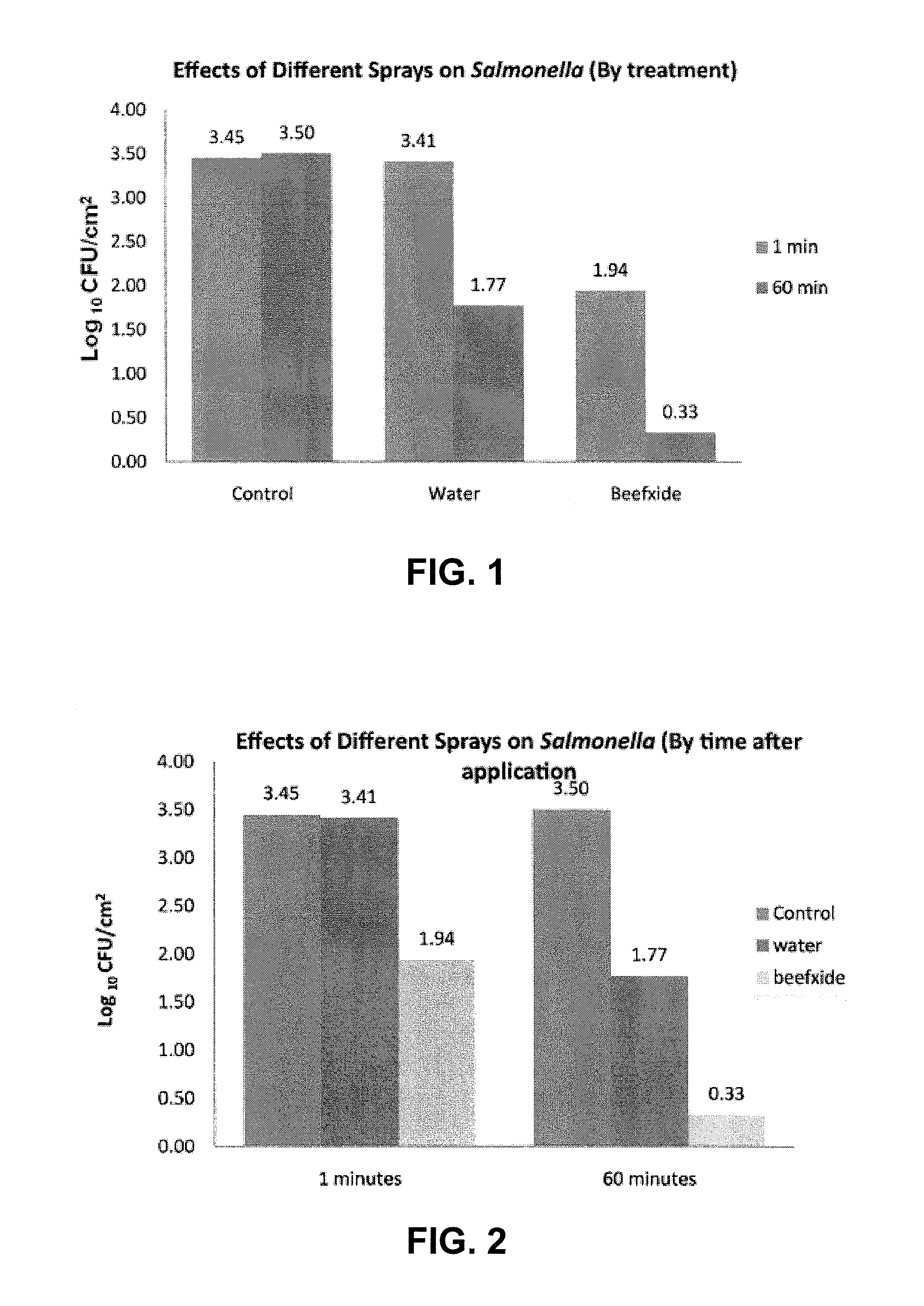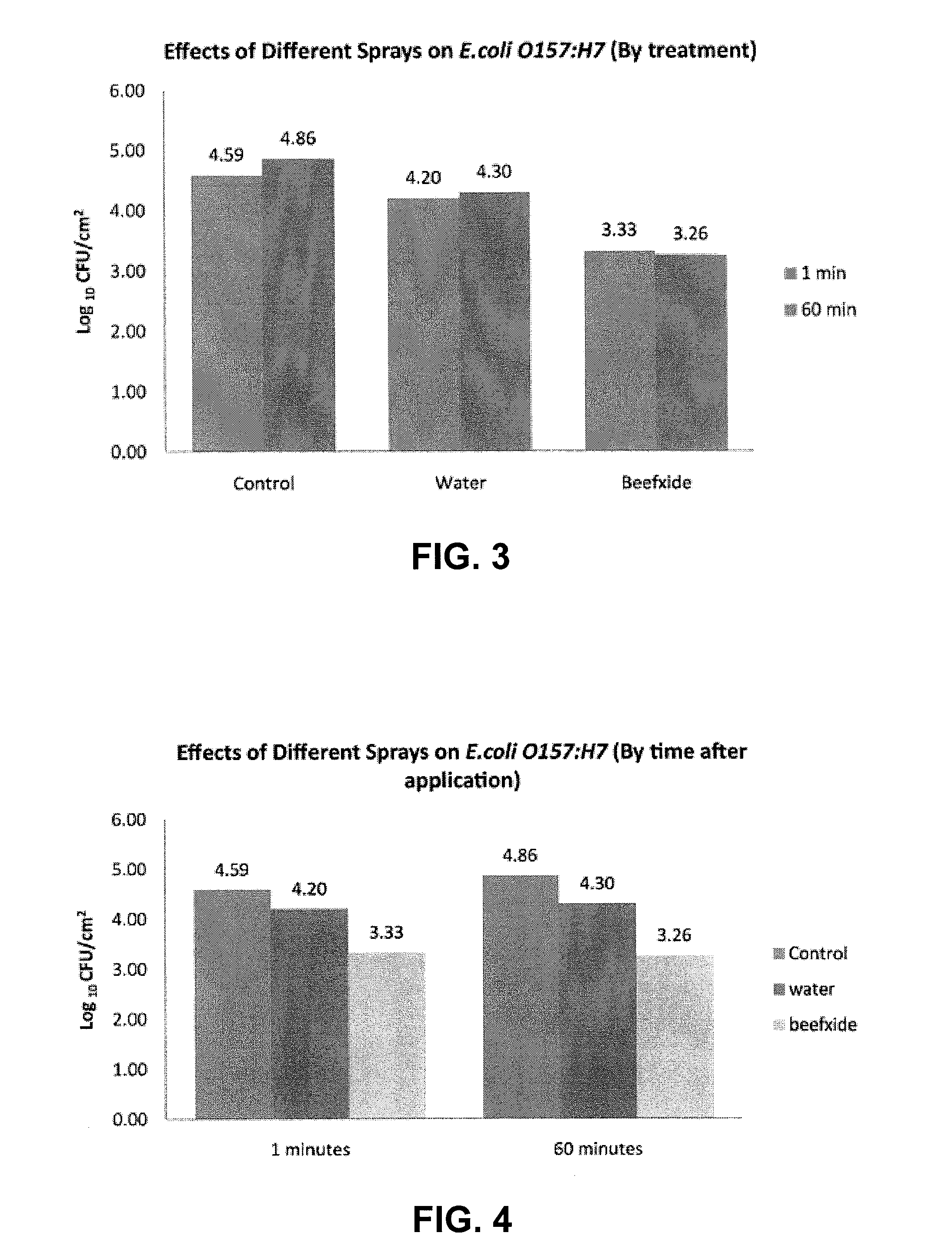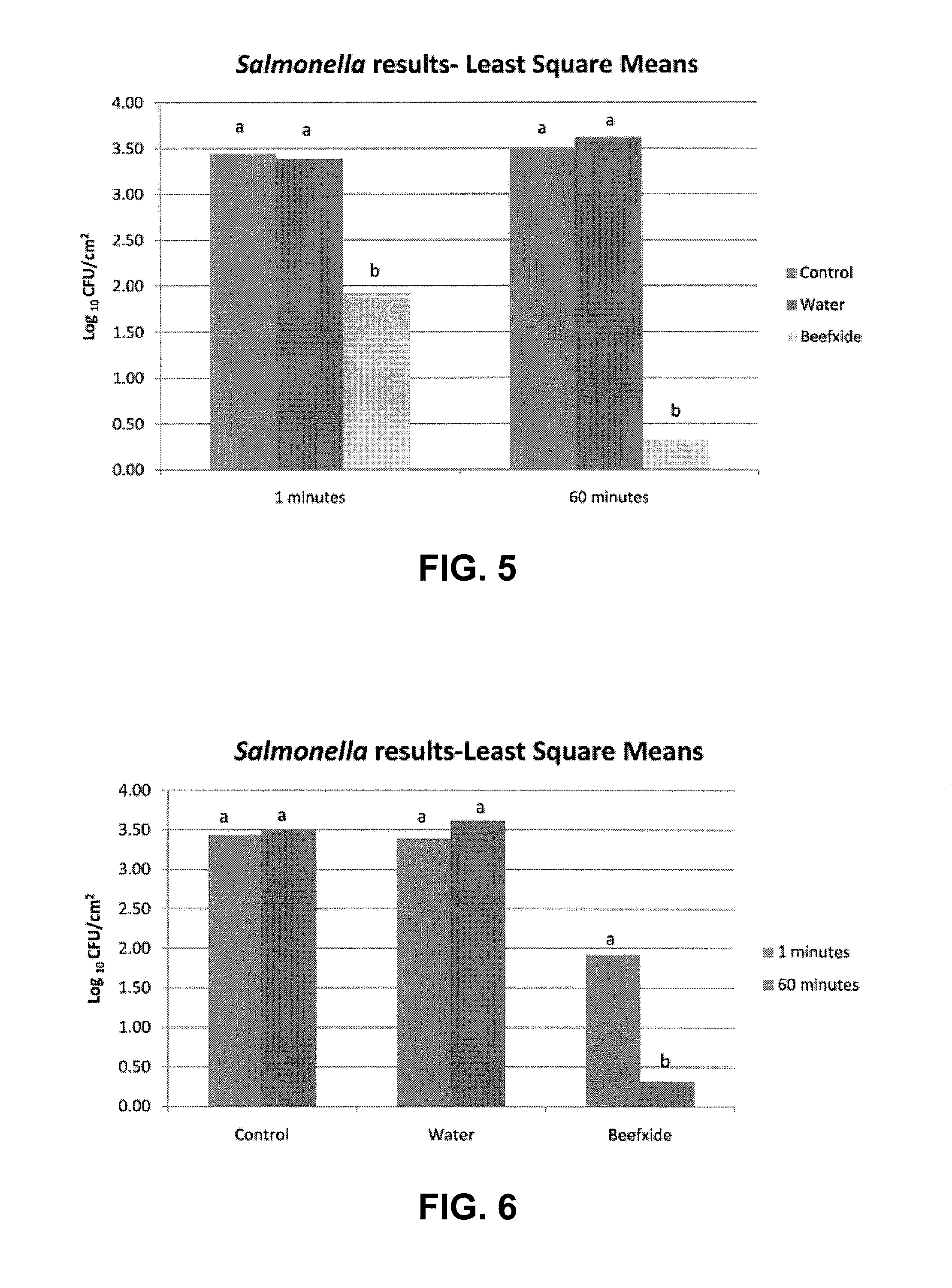Laboratory method and experimental specimen for validating the efficacy of antimicrobial agents on bovine carcasses
a bovine carcass and experimental specimen technology, applied in the field of improved methods and specimens for testing the effectiveness of antimicrobial agents, can solve the problems of serious economic consequences for meat producers, processors, and other members of the distribution chain, and achieve the effect of accurately reflecting the interaction and efficiently and accurately assessing the efficacy of an antimicrobial agen
- Summary
- Abstract
- Description
- Claims
- Application Information
AI Technical Summary
Benefits of technology
Problems solved by technology
Method used
Image
Examples
example
[0049]Four, intact male dairy calves age 7 to 10 days were used as test models. The calves had not been fed colostrum. The calves were purchased and transported to the Texas Tech University G.W. Davis Meat and harvested under humane and sanitary conditions using procedures common to the beef processing industry. Once the harvest process is complete, the hot carcasses were transported to the Pathogen Processing Laboratory located on the Texas Tech University campus for antimicrobial testing.
[0050]Tests were performed to evaluate “BEEFXIDE®” as an antimicrobial on adult beef carcasses. The antimicrobial used in the tests is a mixture of lactic and citric acids manufactured by Purac America, Inc., Lincolnshire, Ill., under the designation “CL 21 / 80” and sold under the trademark “BEEFXIDE®” by Birko Corporation, Henderson, Colorado.
Methodology
Calves
[0051]Four, intact male dairy calves aged 7 to 10 days will be purchased from a dairy farm within 45 miles of Lubbock, Tex. The calves will ...
PUM
 Login to View More
Login to View More Abstract
Description
Claims
Application Information
 Login to View More
Login to View More - R&D
- Intellectual Property
- Life Sciences
- Materials
- Tech Scout
- Unparalleled Data Quality
- Higher Quality Content
- 60% Fewer Hallucinations
Browse by: Latest US Patents, China's latest patents, Technical Efficacy Thesaurus, Application Domain, Technology Topic, Popular Technical Reports.
© 2025 PatSnap. All rights reserved.Legal|Privacy policy|Modern Slavery Act Transparency Statement|Sitemap|About US| Contact US: help@patsnap.com



